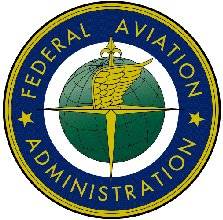Fri, Sep 18, 2009
Airlines No Longer "Customers"
 FAA Administrator Randy Babbitt has announced a 'new' focus on
improving the agency’s response to public safety complaints
and whistleblower contributions, as well as renewing efforts to
ensure consistent interpretation of agency regulations and
policies. He also outlined ongoing actions to ensure that air
carriers comply with safety directives while minimizing disruptions
to passengers.
FAA Administrator Randy Babbitt has announced a 'new' focus on
improving the agency’s response to public safety complaints
and whistleblower contributions, as well as renewing efforts to
ensure consistent interpretation of agency regulations and
policies. He also outlined ongoing actions to ensure that air
carriers comply with safety directives while minimizing disruptions
to passengers.
In addition, the FAA is improving how it communicates and
interacts with employees, the public, air carriers, and
manufacturers, based on last year’s focused inspections on
air carriers’ compliance with Airworthiness Directives (ADs).
That effort resulted in flight cancellations and prompted questions
about the treatment of whistleblowers and the FAA’s
relationships with airlines.
“These changes make it clear that the FAA’s
number-one customer is the public,” said Administrator
Babbitt. “We value the safety information we receive from our
employees, the public and industry, and these actions reinforce
that. We know we can improve how we all communicate technical
safety information so we maintain a safe U.S. fleet and avoid
flight cancellations wherever possible.”
The changes include the following:
- Creating a new Office of Audit and Evaluation that will handle
all public safety complaints and whistleblower contributions. It
will serve as the focal point for the U.S. Office of Special
Counsel, Government Accountability Office, and the Department of
Transportation’s Inspector General. It will oversee the FAA
Administrator’s Hotline, Aviation Safety Hotline, Public
Inquiry Hotline, Whistleblower Protection Hotline, and the Safety
Issues Reporting System.
- The FAA will no longer refer to airlines as the agency’s
“customer.” Instead, through the Consistency and
Standardization Initiative, the FAA is now providing managers and
supervisors in safety offices around the nation with guidance to
ensure that FAA decisions are consistent with rules and policies
and are communicated in a standard, consistent manner.
- The FAA is strengthening the procedures used by air carriers,
manufacturers, and the FAA to ensure that air carriers comply with
ADs. The goal is to maintain safety while minimizing disruptions to
passengers by improving:
- service information and instructions from aerospace
manufacturers
- air carrier management of planning and prototyping how ADs are
implemented
- FAA coordination with the air carriers through the planning and
prototyping process

In addition, the FAA is strengthening its procedures to assist
inspectors when they make compliance determinations and use the
Alternative Method of Compliance.
- The FAA is acting on five short-term recommendations from an AD
Compliance Review Team of experts to improve the clarity and
interpretation of ADs. The agency has also chartered an Aviation
Rulemaking Committee to identify and implement long-term actions
that can be completed by the third quarter of 2011.
More News
NASA Takes in Orion, Begins Launch Processing for a Crewed Mission Aerospace giant Lockheed Martin recently turned in its share of the Artemis II venture, delivering its Orion spac>[...]
During The Forced Landing, The Airplane Landed Short Of The Runway And Left Of The Runway Centerline Analysis: The pilot reported that, during the initial climb, the engine lost pa>[...]
From 2010 (YouTube Edition): Company Pioneers Alternatives For Bell 206 TR Blades The approved part replacement business can be a tough one... especially when you're competing with>[...]
Obstacle An existing object, object of natural growth, or terrain at a fixed geographical location or which may be expected at a fixed location within a prescribed area with refere>[...]
“NATA’s 3,700 member companies operate at nearly 4,500 airports in thousands of communities across the nation, providing air transportation services, driving economic g>[...]
 Lockheed Hands Over Completed Artemis II Spacecraft
Lockheed Hands Over Completed Artemis II Spacecraft NTSB Final Report: Pulsar Super Pulsar
NTSB Final Report: Pulsar Super Pulsar Classic Aero-TV: Van Horn Rotor Blades -- Tail Rotor Replacements For Bell's 206
Classic Aero-TV: Van Horn Rotor Blades -- Tail Rotor Replacements For Bell's 206 ANN's Daily Aero-Term (05.02.25): Obstacle
ANN's Daily Aero-Term (05.02.25): Obstacle Aero-News: Quote of the Day (05.02.25)
Aero-News: Quote of the Day (05.02.25)




